Before Interstellar got anywhere near the CGI labs, Christopher Nolan went back to the land. Maize is the Earth’s last viable crop in the film’s near-future, and before filming began the director decided his team would go the full Jolly Green Giant. After consultation with respected agricultural authority Zack Snyder, who had grown a field of the stuff for Man of Steel, Nolan’s team laid down 500 acres just south of Calgary, Canada. They mowed down some with a 4x4, burned a fair load of the rest. But there was still enough maize left that Interstellar actually ended up making money on its farming offshoot.
The endless green sea of crop, the white clapboard homestead, Malick magic-hour glow breaking over the top of good ol’ boy narration. Interstellar, from the very first trailer, seemed so rooted in the homespun imagery of the American heartlands, I half-expected Matthew McConaughey to enter the wormhole in a rocket-boosted combine harvester.
But it’s only the latest in a recent group of films to cloak sci-fi futures in classic Americana: Rian Johnson’s Looper (2012) posits a world dominated by China, but its climax boils down to a telekinetic dustup on a Kansas homestead; in 2011’s Real Steel, Hugh Jackman and his clapped-out robot fly the flag for troubled US rust-belt industry in an age of hi-tech automaton fighting bouts; the denizens of 22nd-century Los Angeles in In Time (2011) may have potentially infinite lifespans, but they still drive around in Lincoln Continentals and loiter near the Sixth Street viaduct, noirish backdrop of choice since the 1970s. Even Transformers has been getting down-home, with Age of Extinction picking a backwoods Texas farm to host the first epic robot battle. We’ll see what kind of spin the forthcoming Westworld TV series, to be developed by Interstellar screenwriter Jonathan Nolan, puts on wild-west Americana.
This new wave of sci-fi Americana isn’t quite retro-futurism as we know it (though Interstellar’s pseudo Dust Bowl-era talking-head interviews flirt with that, as do Looper’s blunderbuss-armed hitmen and In Time’s noir fetish). It’s much more austere and earnest, an assertion that timeless American values can play just as much a part in shaping the future as technological prowess.
The same self-reliance and ingenuity that hauled Americans across their continent will get them across the cosmos is Interstellar’s message. Its mission to the stars is led by the remnants of Nasa, and the film’s simple white spacesuits and blazing atmosphere-exit footage are meant to suggest continuity with the 1960s and 70s space programme, the last great period of US frontiersmanship. America can still do this, Nolan solemnly cheerleads throughout the film; his mouthpiece is McConaughey’s character, Cooper, a maverick manqué who belongs among the envelope-pushing hotshots of The Right Stuff.
Alfonso Cuarón presumably agrees about the land of the free: in Gravity, Sandra Bullock might be headed for the Russian and Chinese space stations – (symbolism alert!) the emerging economies of our time – but only under the guidance of George Clooney’s yarn-spinning, country-music-listening, old-timer space cowboy, the literal touchstone amid the void who opens the film.
Back in the real world, there’s one pressing practical reason for the Americana revival. The country’s dynamic cityscapes and wisecracking gumption were once the default blockbuster mode, but the physical and spiritual presence of America on screen has been watered down as Hollywood’s audience has become more global. You can see films like Gravity, Age of Extinction, Interstellar and its mentor-in-agronomics Man of Steel (which also majored in midwestern imagery) as attempts to keep the US audience on side by returning to hallowed classic scenery, while still cranking up the technological CGI blast that now powers the global blockbuster industry.
If Hollywood is working out how much allegiance it owes to America, it’s not surprising that Americana sci-fi also displays a worrisome side regarding the national identity. Farming, that midwest mainstay, is linked with a kind of perilous subsistence thinking in Interstellar – depending on the land for food, rather than striking out in search of bold new possibilities. Cooper only practises it reluctantly. Meanwhile, Looper’s hip young hitmen, sent their instructions by time-travel from crime syndicates in the future, are the ultimate US consumers. To the extent of consuming themselves: they live it up in the short term on their criminal proceeds, with the knowledge that they will one day themselves be sent back in time to be killed. Suddenly, the Kansan sugar-cane fields where they off their victims look like a regressive dumping ground for the film’s hi-tech, Chinese-dominated future. The hitmen’s retro, cravat-fetishing affectations are mocked by their paymaster: “The movies that you’re dressing like are just copying other movies. Do something new, huh?”
Interstellar, Looper and Real Steel – in which Hugh Jackman’s obsolete robot Atom is forever on the verge of annihilation by newer models – all pose the question: is it the end of the line for American trailblazing? Nolan’s film amounts to 166 minutes of agonising about whether further expansion is possible for mankind; in business terms, Hollywood currently faces a parallel dilemma of trying to find unsaturated markets and new creative paths in order to keep growing. One solution is to not to expand at all, but to rejuvenate the US economy from within. Like the post-credit-crunch boom in small business entrepreneurs detailed by New Yorker writer George Packer in his 2013 book The Unwinding; folk returning to the land and repurposing it for 21st-century needs, like biodiesel.
It’s that kind of inner spirit that sci-fi Americana, uploading folk memory on to our cinema screens, is ultimately trying to invoke. Front and centre of these future visions, iconic American topography and its culture – the cosy homesteads, hypnotic crop plains, travelling fairs – almost feel as if they exist out of time. They become imbued with a kind of immanence. Interstellar, without giving away crucial plot details, gives the same kind of significance to Cooper’s farm as 2001 does to the black monolith. Looper’s rustic crime scenes are the blue-skied nexus where a man meets his own future, and the self is put on trial.
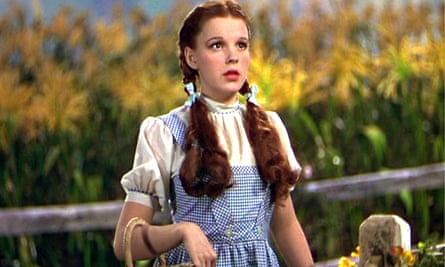
Those two films in particular – with Interstellar’s dimension-bending denouement closer to a sort of old-time spiritualism than Nolan might like to admit – use sci-fi to widen the same imaginative wormholes that have caused periodic eruptions of the weird in seemingly impervious tracts of American normality in past films. The ones that whisked Dorothy out of Kansas in The Wizard of Oz; brought aliens to surburbia in Close Encounters, ET and Flight of the Navigator; or made suburbia alien in Donnie Darko and David Lynch’s mid-period heyday. It’s as if that spectral eerieness was seeded in the landscape to begin with – flowering as well in the work of regionalist painters such as Grant Wood and Andrew Wyeth (cited as an Interstellar influence), not to mention crop-circle speculation, tornado-chasing and other assorted glassy-eyed obsessiveness the continent’s vast spaces seem to breed. Perhaps America never needed to move forward to meet the future; it was there waiting for them all along.
The new wave of Americana sci-fi tells us that the American soul, and its dreams, are still intact. What’s less certain is whether they can still impact the real world. Interstellar thinks the answer is yes; but then it’s just a movie – and perhaps they are the best thing America has left.
- Interstellar is released on 5 November in the US, 6 November in Australia and 7 November in the UK
- This article was corrected on 4 November 2014. The original referred to a “clapperboard homestead”.




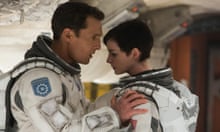

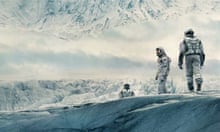
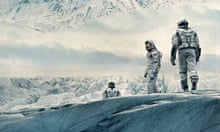
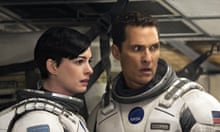
Comments (…)
Sign in or create your Guardian account to join the discussion